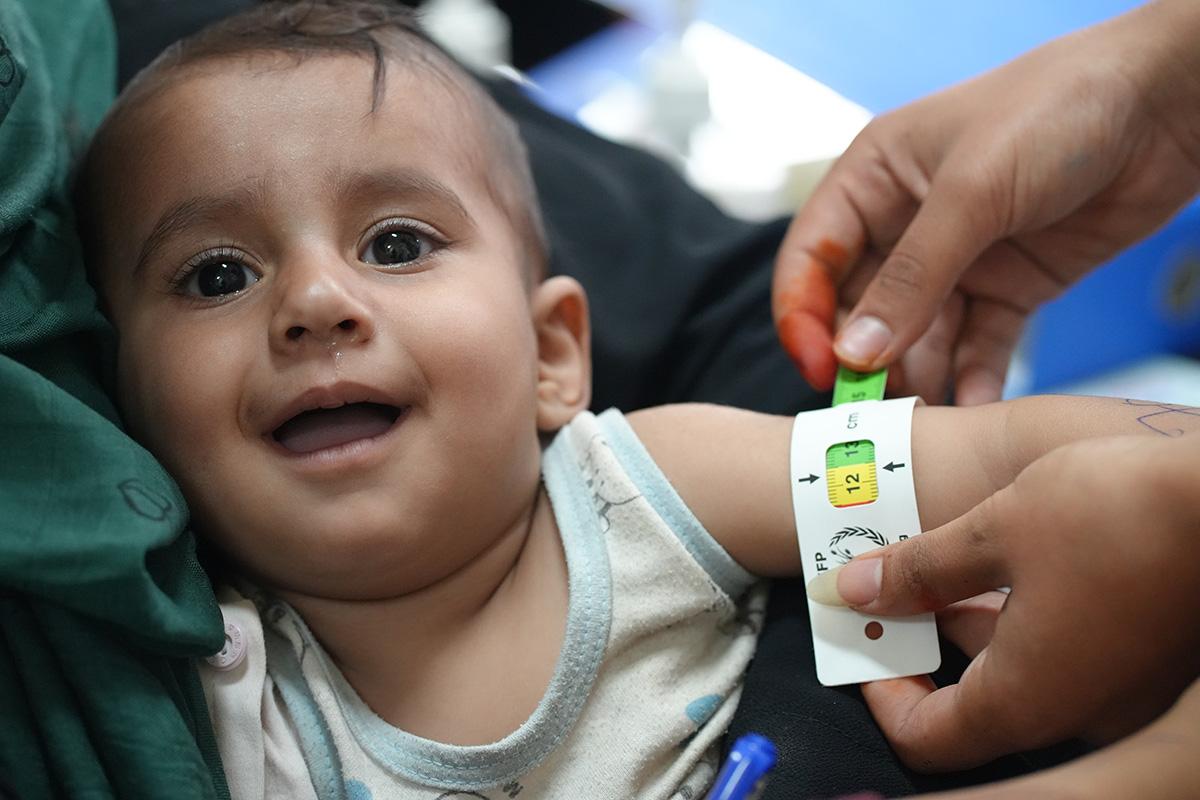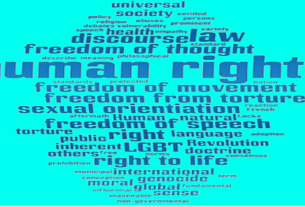|
Getting your Trinity Audio player ready...
|
1 year since foreign forces withdrew from Afghanistan and the Taliban came to power, life is still unbearably hard, particularly for women and girls. Half of the population remains dependent on humanitarian aid, including 6 million living on the edge of famine.
Debt has racked up as food prices have skyrocketed. Drought, warming temperatures and lack of money to buy seeds and agriculture tools put another harvest in jeopardy.
The ripple effect of the war in Ukraine is adding further misery to the people of Afghanistan, increasing the cost of food in local markets and humanitarian aid that has been a lifeline for so many people.
Having struggled through a year of unprecedented economic hardship and environmental disasters, including earthquakes and flooding, families have little left to get through this winter. Millions of them will be counting on assistance from the World Food Programme (WFP), which is supported by the EU’s humanitarian aid.
Since 2021, the EU has contributed over €86 million in humanitarian funding toward WFP’s emergency operations. This year, EU humanitarian funding helped WFP sustain its life-saving operations, including emergency food assistance for communities affected by the earthquake in June, and making the United Nations Humanitarian Air Service (UNHAS) available to humanitarian partners.
Arifa is a young woman from Afghanistan. Her husband has health issues and is currently unemployed. They are living in a small rental house and hardly managing to pay rent. With EU funding, WFP supports Arifa and her family.
© WFP/Ziauddin Safi. All rights reserved. Licensed to the European Union under conditions.
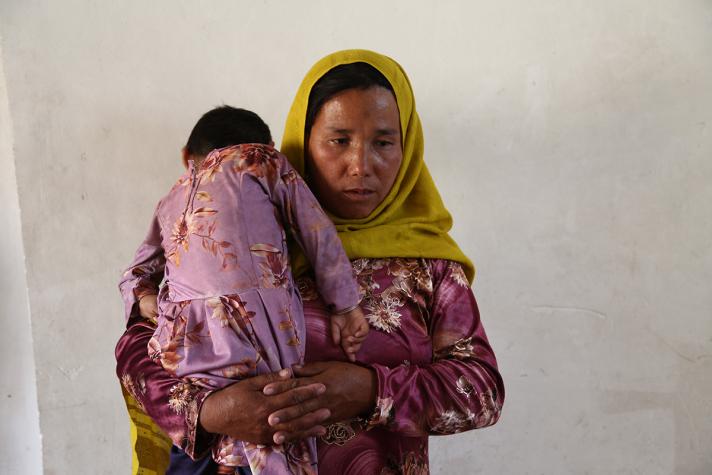
Razia has 4 children. Her husband was killed during the war, leaving her struggling to provide for her family. One of her children has a disability and needs care. Razia is among the over 21 million people who have received WFP food assistance this year.
© WFP/Arete/Muhsen Rasekh. All rights reserved. Licensed to the European Union under conditions.

Rabia, in her 60s, lives with 25 members of her extended family. She is among the more than 21 million Afghans who have been supported by WFP this year, including with EU-funded cash assistance that they can use to buy food and other essentials.
© WFP/Sadeq Naseri. All rights reserved. Licensed to the European Union under conditions.
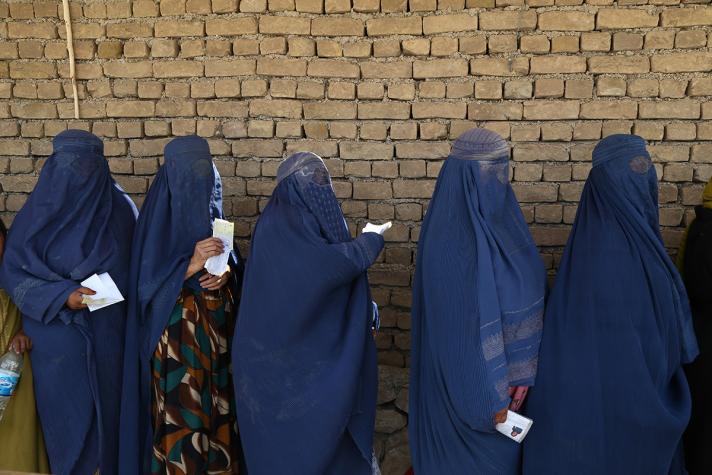
Women line up to receive food rations from WFP – their only means to feed families. In Afghanistan, women and girls are disproportionally impacted by violence or the effect of the economic crash.
© WFP/Arete/Muhsen Rasek. All rights reserved. Licensed to the European Union under conditions.

Ehsan, 9-months-old, was brought to a clinic in Kabul. His mother Aisha cannot give him sufficient food and he is suffering from nutritional deficit.
© WFP/Laila Fakori. All rights reserved. Licensed to the European Union under conditions.

Laili learns sewing at a vocational training centre run by WFP with EU funding. She is learning how to sew children’ and women’s clothes and with that skill she hopes to earn some money. She receives food assistance while enrolled in the training.
© WFP/Sadeq Naseri. All rights reserved. Licensed to the European Union under conditions.

Women participating in an embroidering class in Balkh. Humanitarian partners like WFP are combining food assistance with vocational training for women and men.
© WFP/Ziauddin Safi. All rights reserved. Licensed to the European Union under conditions.
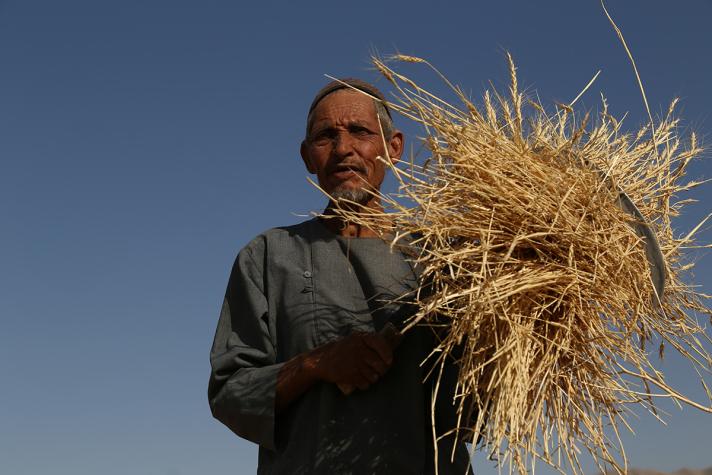
Merza Mohammad, a 75-year-old farmer, says he has no means of feeding his family now that his crops are destined to fail. This winter wheat harvest is looking grim due to the ongoing drought and high costs of agriculture inputs.
© WFP/Arete/Muhsen Rasekh. All rights reserved. Licensed to the European Union under conditions.
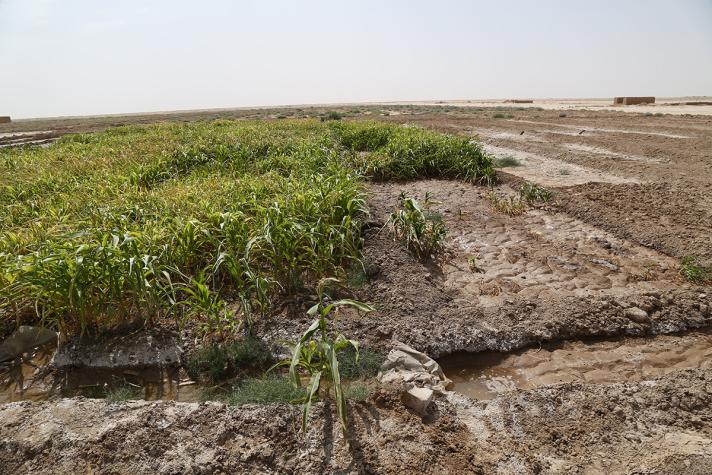
Wheat production is estimated to be 7-13% below average at the national level; and this is even considered optimistic. A below-average harvest means vulnerable families are less prepared than ever to weather another harsh winter.
© WFP/Arete/Muhsen Rasekh. All rights reserved. Licensed to the European Union under conditions.
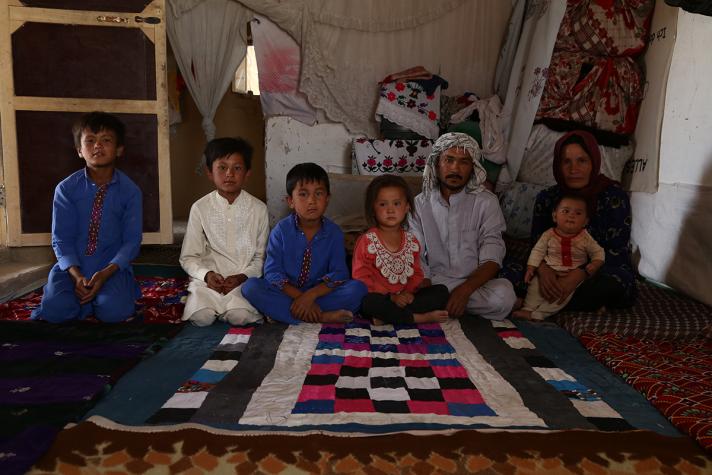
The family of Sher Husain, his wife, Gulsom, and their 6 children. “We don’t have enough food to eat. We are in a bad financial situation. We don’t have money to provide food for the family,” he says.
© WFP/Arete/Muhsen Rasekh. All rights reserved. Licensed to the European Union under conditions.
Story and photos by the World Food Programme (WFP).
Publication date: 15/12/2022
